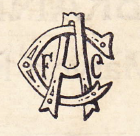Attention: Please take a moment to consider our terms and conditions before posting.
Tuesday Quiz - England Special

Henry Irving
Posts: 85,444
With so many St Georges flags on display I thought I'd theme this weeks quiz on England
1. Who was Patron saint of England before St George?
2. Which English physicist, mathematician and astronomer described universal gravitation and the three laws of motion which dominated scientific thinking for the next 300 years?
3. Who is generally accepted as the first king of all England?
4. Who wrote the words to the poem, later turned into a song, "Jerusalem"?
5. Which English author was one of the Founding Fathers of the United States and was also deeply involved in the early stages of the French Revolution.
6. Why would some heralds say people are wrong to talk and sing about "three lions on a shirt"?
7. From where does the word "England" derive?
8 Which English author is sometimes called the father of English literature, as he was the first author to use and show the power of vernacular English language, when previously only French or Latin were considered "proper".
9 Which Englishwoman was both the first female doctor and first female Mayor in England?
10 Which Englishman painted this picture?
1. Who was Patron saint of England before St George?
2. Which English physicist, mathematician and astronomer described universal gravitation and the three laws of motion which dominated scientific thinking for the next 300 years?
3. Who is generally accepted as the first king of all England?
4. Who wrote the words to the poem, later turned into a song, "Jerusalem"?
5. Which English author was one of the Founding Fathers of the United States and was also deeply involved in the early stages of the French Revolution.
6. Why would some heralds say people are wrong to talk and sing about "three lions on a shirt"?
7. From where does the word "England" derive?
8 Which English author is sometimes called the father of English literature, as he was the first author to use and show the power of vernacular English language, when previously only French or Latin were considered "proper".
9 Which Englishwoman was both the first female doctor and first female Mayor in England?
10 Which Englishman painted this picture?
0
Comments
-
2. Newton, not Shaun.0
-
10. Constable0
-
7. Think its from the Angles people inhabiting the country centuries ago.
Hence the french Angleterre (land of Angles).0 -
3. Athelstan (sp?)
5. Adam Smith0 -
4. Blake0
-
[cite]Posted By: The Red Robin[/cite]2. Newton, not Shaun.
correct Issac it was.[cite]Posted By: QatarNapsy[/cite]10. Constable
nope[cite]Posted By: QatarNapsy[/cite]7. Think its from the Angles people inhabiting the country centuries ago.
Hence the french Angleterre (land of Angles).
Correct Angle Land became England[cite]Posted By: sinking feesh[/cite]3. Athelstan (sp?)
Yes[cite]Posted By: sinking feesh[/cite](sp?)
5. Adam Smith
No[cite]Posted By: DaveMehmet[/cite]4. Blake
yes, William Blake, Genius and mad man.0 -
8. Geoffrey Chaucer
9. Elizabeth Garrett
10. Turner0 -
2. Newton0
-
[cite]Posted By: stilladdicted[/cite]8. Geoffrey Chaucer
9. Elizabeth Garrett
10. Turner[cite]Posted By: stilladdicted[/cite]2. Newton
All correct0 -
Still to get
1. Who was Patron saint of England before St George?
5. Which English author was one of the Founding Fathers of the United States and was also deeply involved in the early stages of the French Revolution.
6. Why would some heralds say people are wrong to talk and sing about "three lions on a shirt"?0 -
Sponsored links:
-
5. Thomas Paine0
-
.0
-
[cite]Posted By: Sussex_Addick[/cite]5. Thomas Paine
Correct. A great Englishman[cite]Posted By: ValleyGary[/cite].
X0 -
There's a 'for the posh and rich' St Edmunds school in Canterbury and I remember it made the claim that St. Edmund was the true patron saint of England. Please don't tell me that they were right!0
-
[cite]Posted By: Henry Irving[/cite]
6. Why would some heralds say people are wrong to talk and sing about "three lions on a shirt"?
I know the lions come from Richard of Lionheart's coat of arms but don't really know much more about it. Maybe the coat of arms didn't have three lions?0 -
6. Cos 3 leopards on my shirt just doesn't work. To be a lion you have to be rampant, but perhaps Cappello has it sorted?0
-
[cite]Posted By: stilladdicted[/cite]There's a 'for the posh and rich' St Edmunds school in Canterbury and I remember it made the claim that St. Edmund was the true patron saint of England. Please don't tell me that they were right!
Don't know about "true" but St Edmund, who is buried at Bury St Edmund (no, really that's how it got its name) was the Patron saint until Edward III decided to have St George instead.
St Edmund The Martyr was King of East Anglia and was killed by the Vikings.0 -
[cite]Posted By: stilladdicted[/cite]6. Cos 3 leopards on my shirt just doesn't work. To be a lion you have to be rampant, but perhaps Cappello has it sorted?
Yes, in heraldic terms they are leopards
French was the language of English government for a few centuries after the Norman occupation and oppression of 1066, and in French blazon a lion, without further description, is always rampant; a lion passant guardant – one that is walking forward and facing outward toward the viewer – is always called a léopard.
A lion rampant guardant is a léopard lionné, and one passant but with its head in profile is a lion léopardé. The terms describe the animal's posture, not his species. Whatever the beast is called, the heraldic lion or leopard should always have at least a hint of a mane.0



